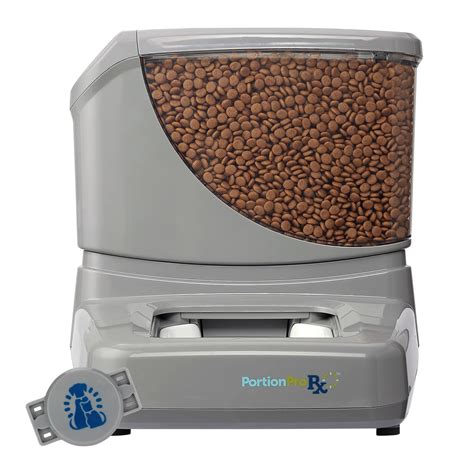Introduction
Pet sitters play a crucial role in ensuring the well-being of pets when their owners are away. One essential aspect of pet care is providing food at regular intervals. Traditional methods of pet feeding often rely on manual labor, which can be inconvenient and time-consuming for busy pet sitters. RFID pet feeders offer a smart and efficient solution to this challenge.

RFID Pet Feeders: A Technological Leap
RFID (Radio Frequency Identification) pet feeders utilize advanced technology to automate the feeding process. These devices use RFID tags attached to the pet’s collar to identify the animal and dispense the appropriate amount of food. This technology eliminates the need for manual feeding and ensures accurate portion control, preventing overfeeding or underfeeding.
Advantages of RFID Pet Feeders for Pet Sitters
- Increased Efficiency: RFID pet feeders streamline the feeding process, saving pet sitters valuable time. They can program the feeder to dispense food at specific intervals, ensuring that pets receive meals on time, even when the sitter is not present.
- Remote Monitoring: Some RFID pet feeders offer remote monitoring capabilities, allowing pet sitters to track their pet’s feeding habits from anywhere with an internet connection. This feature provides peace of mind and enables sitters to make adjustments as needed.
- Enhanced Pet Safety: RFID pet feeders prevent unauthorized access to pet food, reducing the risk of contamination or theft. By using RFID tags, only the designated pet can access the food, ensuring that other animals or pests do not consume the pet’s food.
Comparison: RFID Pet Feeders VS Traditional Methods
| Feature | RFID Pet Feeders | Traditional Methods |
|---|---|---|
| Automation | Yes | No |
| Portion Control | Yes | Limited |
| Convenience | High | Low |
| Time Savings | Yes | No |
| Remote Monitoring | Yes | No |
| Security | High | Low |
Strategies for Implementing RFID Pet Feeders
- Research: Explore different RFID pet feeder models and choose the one that best meets the needs of your pet sitting business. Consider factors such as capacity, programmability, and remote monitoring capabilities.
- Training: Provide clear instructions to pet owners on how to use the RFID pet feeder and attach the RFID tag to their pet’s collar.
- Monitoring: Regularly review feeding logs and make adjustments as needed to ensure pets are receiving appropriate portions at the correct times.
- Customer Communication: Inform pet owners about the benefits of RFID pet feeders and how they can enhance the pet sitting experience.
Tips and Tricks for Seamless RFID Pet Feeding
- Use a feeder with a large capacity to minimize refill frequency.
- Program the feeder to dispense small portions at frequent intervals to prevent overeating.
- Regularly check the RFID tag to ensure it is securely attached to the pet’s collar.
- Consider using a feeder with a built-in camera for remote monitoring and peace of mind.
- Keep the feeder clean and free of debris to prevent malfunction.
Frequently Asked Questions (FAQs)
- How do I set up an RFID pet feeder?
- Can I monitor my pet’s feeding habits remotely?
- What happens if the RFID tag becomes lost or damaged?
- Are RFID pet feeders more expensive than traditional methods?
- Can I use an RFID pet feeder with multiple pets?
- How do I clean and maintain an RFID pet feeder?
Current Status and Future Trends
RFID pet feeders are gaining popularity among pet sitters as they offer several advantages over traditional feeding methods. The market for RFID pet feeders is projected to grow significantly in the coming years as pet owners become increasingly aware of the benefits of automated and remote pet care.
Future trends in RFID pet feeders include:
- Integration with Smart Home Systems: RFID pet feeders will connect seamlessly with smart home devices, allowing pet owners and sitters to manage pet feeding remotely and access real-time data on their pet’s feeding habits.
- Automated Food Replenishment: RFID pet feeders will feature sensors that monitor food levels and automatically order refills when necessary, eliminating the hassle of manual replenishment.
- Personalized Nutrition: RFID pet feeders will utilize machine learning algorithms to track each pet’s individual dietary needs and tailor feeding schedules and portions accordingly.
Conclusion
RFID pet feeders are a transformative technology that offers significant benefits to pet sitters. By automating the feeding process, providing remote monitoring capabilities, and enhancing pet safety, RFID pet feeders empower pet sitters to provide exceptional care to their furry clients. As the technology continues to advance, RFID pet feeders will become an essential tool for pet sitters in the 2025 pet care landscape.





















